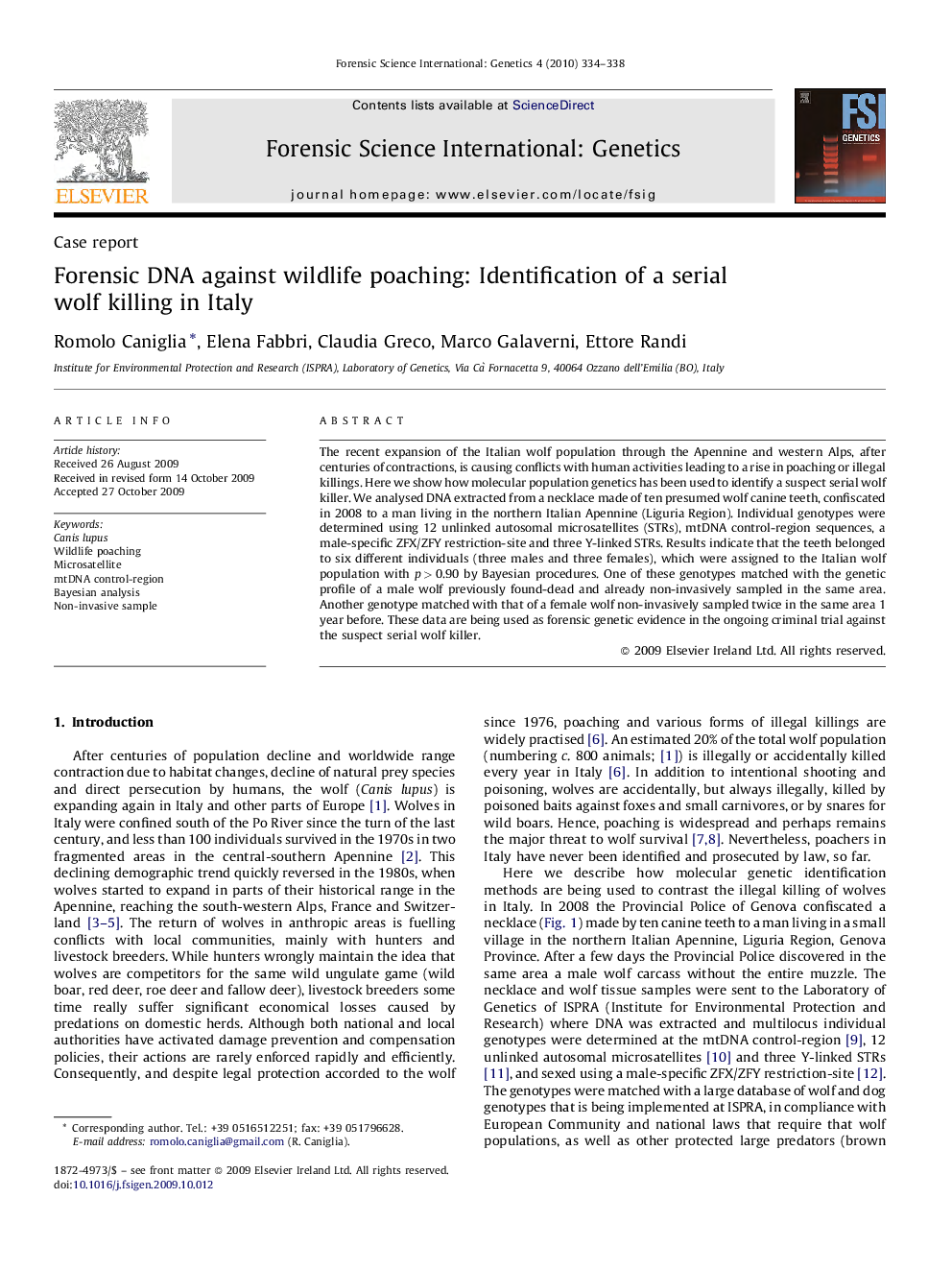| Article ID | Journal | Published Year | Pages | File Type |
|---|---|---|---|---|
| 99377 | Forensic Science International: Genetics | 2010 | 5 Pages |
The recent expansion of the Italian wolf population through the Apennine and western Alps, after centuries of contractions, is causing conflicts with human activities leading to a rise in poaching or illegal killings. Here we show how molecular population genetics has been used to identify a suspect serial wolf killer. We analysed DNA extracted from a necklace made of ten presumed wolf canine teeth, confiscated in 2008 to a man living in the northern Italian Apennine (Liguria Region). Individual genotypes were determined using 12 unlinked autosomal microsatellites (STRs), mtDNA control-region sequences, a male-specific ZFX/ZFY restriction-site and three Y-linked STRs. Results indicate that the teeth belonged to six different individuals (three males and three females), which were assigned to the Italian wolf population with p > 0.90 by Bayesian procedures. One of these genotypes matched with the genetic profile of a male wolf previously found-dead and already non-invasively sampled in the same area. Another genotype matched with that of a female wolf non-invasively sampled twice in the same area 1 year before. These data are being used as forensic genetic evidence in the ongoing criminal trial against the suspect serial wolf killer.
